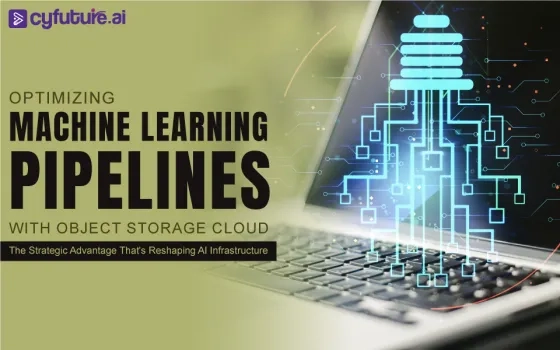1. Summary Abstract
Many organizations are migrating their applications to cloud to reduce their annual maintenance and Data Center cost. Nevertheless, organizations do not realize expected value after the cloud migration. FinOps provide an approach to measure, manage, and monitor cloud utilization therefore Business, Finance and IT teams are able to make informed decisions on the current cloud spend and forecast the future.
2.Business Context
Cloud adoption is known to be one of the pathways for companies to move towards Digital Transformation. Many organizations are in process of migrating their applications with the intent to reduce the IT infrastructure costs. However, many organizations do not realize the true benefits and forecasted cost savings post the cloud migration. Indeed, companies average 23% overconsume against budget and 30% of their cloud spend are a waste. The reasons could be manyfold 1. Cloud utilization not monitored 2. Not leveraging cloud native services 3. Applications not tuned alluding to more storage and memory consumption 4. Resources overprovisioning and 5 Lackluster cloud governance leading to low benefits of cloud migration. While each of the reasons has its own root cause and probable remediation, the organizations are unable to locate the nitty gritty of the underlying issues. Reason being, Business and IT do not have visibility of their applications resource utilizations. Few think that cloud cost management is the responsibility of Finance teams. One and all, organizations lack visibility of resources utilized, accountability of the individuals/teams responsible and direction to optimize the cloud spend.
Analysts forecasts that there is potential of $1 trillion value can be realized by 2030 through cloud transformation. This could be possible only by effective utilization of cloud. FinOps is one of the ways to bring in cloud governance.
3. What is FinOps?
FinOps is a framework that brings Business, Finance and IT teams collaborate and be responsible for the overall cloud utilization. The traditional cost management involves developing the financial budget at the beginning for the financial year and then tracked through the year. But, FinOps brings in the cultural change with the three teams work together in agile by measuring the cloud consumption in real time and make the decisions to optimize the utilization. For effective implementation of FinOps it is appropriate to have common guiding principles listed below for better collaboration.
1. Transparency
2. Collaboration
3. Business Value
4. Accountability
5. Planning
6. Blamelessness
While each organization may adopt its own way to disseminate the guidelines to the working groups, it is a good practice to have a Cloud Center of Excellence (CCOE) to bring in governance especially when there are multiple business units (BUs). The CCOE should closely work with the respective migration team and define the standards, guidelines, and governance.
4.FinOps Lifecycle
FinOps framework advocates a three-step approach to measure cloud consumption effectively
- Inform
The objective of ‘Inform’ is to provide the stakeholders across the business units with data on the cloud consumption with transparency. The key information the teams can look out for include
- Planned allocation of cloud budget for the upcoming migration
- Actual utilization of Cloud across the workloads. Provide rationale if there are spikes identified in the report. Example, the retail cloud spend may go high during festive seasons as the public go over shopping spree
- Forecast the consumption based on business priorities to plan the future cloud budget. The Business units can then adjust and prioritize migrations accordingly.
If there are events where business unit are sharing the cost, the general practice is to apportion based on the nature of workloads. As a best practice, label the cloud resources to the granular possible therefore the detailed consumption data is available for analysis.
- Optimize
In this phase the BUs are expected to take the data produced in the ‘Inform’ phase and take tangible actions to optimize the utilization. If there are any anomalies, the respective team should be able to take action to review the case for optimization. On the contrary, if there are any clarifications, the CCOE team should be able to clarify with evidence. The optimization can be implemented in multiple ways.
- Product Efficiency – Here, the project teams can self-assess the utilization against the nature of workload and look out for optimization. The optimization can come in multiple facets like allocation of resources, tune the application performance, autoscaling, Containers, cloud managed services in place of compute and many more.
- Pricing Efficiency – Here Customers may look out of options like Committed use discounts, usage of Custom VMs and Chargeback
- Guardrails – Project teams can apply guardrails to cap the utilization just to avoid any leakage by enforcing policies, strengthen monitoring, notifications and enforce security principles to avoid malicious attacks. Apply data retention and life cycle policies wherever possible.
- Operate
In Operate, the BUs implement the improvements suggested and deliver value with the upcoming migration. While there could be various measures proposed, it is not necessary all measures may allude to cost savings. In some cases, the cloud spend may be more however, the increase in cost could have would have been offset by the value generated (Eg: Modernizing a mainframe application from on-premise to Cloud leveraging cloud native services). On the contrary, there could be a case where the cloud spend was high enough than the value created (Eg: Rehosting applications from on-premise to Cloud without modernization). This is where the CCOE should guide the team, review the migration design, ensure the migration approach align to the guidelines and lastly ensure the business value is attached.
Post every migration, retrospect the migration process, review the KPIs are within the limits and look out for continuous improvements. Incentivize people and teams that create more value than the cloud spend.
5.Tools for Cloud Cost Management
Traditionally, the Finance tools in the organization produces reports those are treated confidential and are made available only to senior executives. However, the same model cannot be adopted for Cloud Management. The cloud cost management is a collective responsibility and require key representatives across Business, Finance and IT teams. Therefore, the aforesaid members should have access to the cloud consumption and cost reports.
There are many tools available for FinOps management and can be chosen based on the requirements as per individual organization needs. Here are few of the recommendations that can be considered while procuring the tool
Tags/Labels
The tool should have the ability to tag or attach label to every resource and align to its BU. This is a primary required feature as the consumption of cloud resources will be rolled up to the respective BU only if the resources are labelled uniquely.
Dashboards and Reports
The reports access should be given based on the individual identity in a secured manner. There should be defined IAM policies and the users should have the access based on their roles and responsibilities
Metadata
The cloud management team should have the ability to view the metadata and build the reports by dragging the fields of their choice for analysis.
KPIs
The tool should recommend out of the box KPIs based on industry trends and best practices without needing extensive configuration from the users
Budgeting - Planned vs Actuals
This is yet another important feature that the tool should have the provision to allocate the budget and have the ability to track the consumption. Indeed, the tool should have the ability to cap the budget and send alerts if the utilization goes beyond the allocation. Some CSPs allow to resell the reserved instances that helps reduce the cloud consumption of parent company.
Forecast based on Trends
Embedded AI/ML features to produce the reports on future cloud consumption based on historical cloud spend.
Multi-Cloud
The tool should be cloud agnostic and should be able to integrate seamlessly with all major Cloud Service Providers
Lastly, the tool should be simple and user friendly without needing exorbitant training efforts.
6.Conclusion
Analysts forecasts that industrial companies can realize a value of $1 trillion by 2030 through cloud transformation but, through effective cloud management. FinOps is one of the ways to bring in this governance. FinOps is not about curtailing the cloud consumption and demotivate innovations but, enable leaders to take informed decisions on the cloud migration against the business value. The discussion on FinOps ideally should happen at the onset of any cloud migration. Having a CCOE is one of the ways to bring in cloud governance with members representing different business units. Afterall, FinOps is a collective responsibility of Business, Finance, and IT team to manage the cloud cost.















